
The United States Army Rangers are U.S. Army personnel who have served in any unit which has held the official designation of "Ranger". The term is commonly used to include graduates of the Ranger School, even if they have never served in a "Ranger" unit; the vast majority of Ranger school graduates never serve in Ranger units and are considered "Ranger qualified".

The 25th Infantry Division is a United States Army division based at Schofield Barracks in Hawaii. The division, which was activated on 1 October 1941 in Hawaii, conducts military operations primarily in the Asia-Pacific region. Its present deployment is composed of light infantry and aviation units. Tropic Lightning soldiers regularly train with other U.S. military branches to practice and maintain joint operations capabilities. The climate and terrain of the Pacific region demands Tropic Lightning soldiers be able to operate in physically demanding and harsh environments. In 2014, the division opened the Jungle Operations Training Center—the first such school in the Army since the closing of the old Jungle Warfare School at Fort Sherman, Panama Canal Zone. Joint operations and training with partner states herald a new chapter in the history of Tropic Lightning—America's Pacific Division.

The Combat Infantryman Badge (CIB) is a United States Army military decoration. The badge is awarded to infantrymen and Special Forces soldiers in the rank of colonel and below, who fought in active ground combat while assigned as members of either an Infantry or Special Forces unit of brigade size or smaller at any time after 6 December 1941. For those soldiers who are not members of an infantry, or Special Forces unit, the Combat Action Badge (CAB) is awarded instead. For soldiers with an MOS in the medical field they would, with the exception of a Special Forces Medical Sergeant (18D), receive the Combat Medical Badge. 18D Special Forces Medics would receive the Combat Infantryman badge instead.
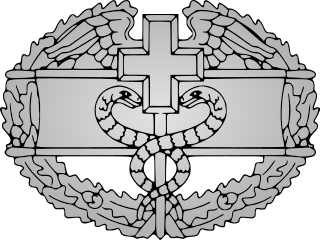
The Combat Medical Badge is an award of the United States Army which was first created in January 1945. Any member of the Army Medical Department, at the rank of colonel or below, who is assigned or attached to a ground combat arms unit of brigade or smaller size which provides medical support during any period in which the unit was engaged in ground combat is eligible for the CMB. According to the award criterion, the individual must be performing medical duties while simultaneously being engaged by the enemy; strict adherence to this requirement and its interpretation will vary by unit. As of 3 June 2005, Special Forces medics are no longer eligible for award, but may now receive the Combat Infantryman Badge. A revision has allowed aviation medics to be eligible for the CMB. The non-combat proficiency equivalent is the Expert Field Medical Badge.

Lawrence Rush "Rick" Atkinson IV is an American author, most recently of The British Are Coming: The War for America, Lexington to Princeton, 1775–1777, the first volume in the Revolution Trilogy. He has won Pulitzer Prizes in history and journalism.
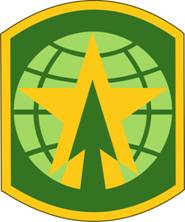
The 16th Military Police Brigade is a military police brigade of the United States Army headquartered at Fort Liberty, North Carolina. This brigade has the only airborne-qualified military police units in the U.S. Army, outside of the 82nd MP Company of the 82nd Airborne Division. It provides law enforcement and police duties to Fort Liberty, and for the XVIII Airborne Corps when deployed. As a brigade with organic airborne units, it is authorized a beret flash and parachute wing trimming, and the shoulder sleeve insignia was authorized to be worn with an airborne tab. According to U.S. Army's Institute of Heraldry, the shoulder sleeve insignia "was amended to delete the airborne tab effective 16 October 2008" when jump status of the brigade was terminated; however, various elements of the brigade remain on jump status.
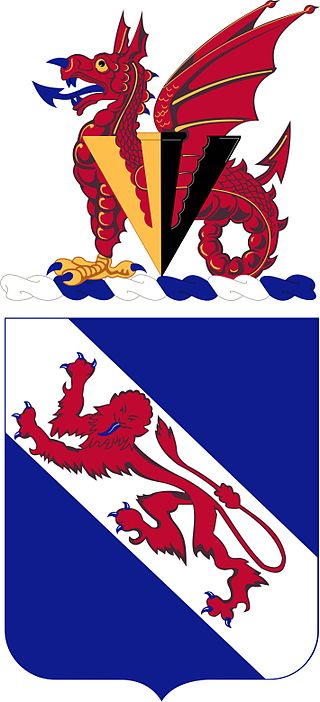
The 508th Infantry Regiment is an airborne infantry regiment of the United States Army, first formed in October 1942 during World War II. The 508th is a parent regiment under the U.S. Army Regimental System, and two battalions from the regiment are currently active: the 1st Battalion, 508th Parachute Infantry Regiment is assigned to the 3rd Brigade Combat Team, 82nd Airborne Division, and the 2nd Battalion, 508th Parachute Infantry Regiment is assigned to the 2nd Brigade Combat Team, 82nd Airborne Division. The regiment served in combat during World War II, and regimental elements have served in combat in the Dominican Republic, Vietnam, Grenada, Panama, Iraq and Afghanistan.

Francis J. "Bing" West Jr. is an American author, Marine combat veteran and former Assistant Secretary of Defense for International Security Affairs during the Reagan Administration.

Jack Howard Jacobs is a retired colonel in the United States Army and a Medal of Honor recipient for his actions during the Vietnam War. He serves as a military analyst for NBC News and MSNBC and previously worked as an investment manager.

The 505th Parachute Infantry Regiment, originally the 505th Infantry Regiment, is an airborne infantry regiment of the United States Army, one of four infantry regiments of the 82nd Airborne Division of the United States Army, with a long and distinguished history.
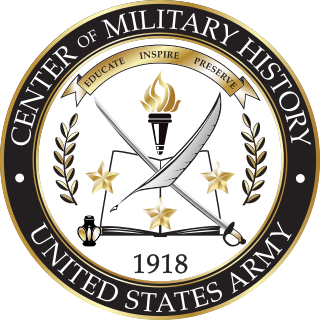
The United States Army Center of Military History (CMH) is a directorate within the United States Army Training and Doctrine Command. The Institute of Heraldry remains within the Office of the Administrative Assistant to the Secretary of the Army. The center is responsible for the appropriate use of history and military records throughout the United States Army. Traditionally, this mission has meant recording the official history of the army in both peace and war, while advising the army staff on historical matters. CMH is the flagship organization leading the Army Historical Program.

The U.S. Army Medical Department Museum — or AMEDD Museum — at Fort Sam Houston, San Antonio, Texas, originated as part of the Army's Field Service School at Carlisle Barracks, Pennsylvania. It moved to Fort Sam Houston in 1946. It is currently a component of the U.S. Army Medical Department Center and School.
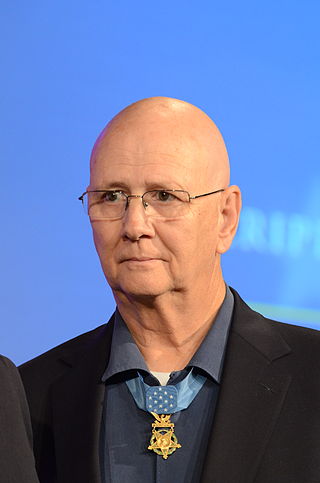
Allen James Lynch is a former United States Army soldier and a recipient of the United States military's highest decoration, the Medal of Honor, for his actions in the Vietnam War.
The United States Army Art Program or U.S. Army Combat Art Program is a U.S. Army program to create artwork documenting its involvements in war and peacetime engagements. The art collection associated with the program is held by the U.S. Army Center of Military History. The United States Army Centre of Military History built the National Museum of the United States Army at Fort Belvoir that is now completed and will open when conditions allow.

James Edward Westcott was an American photographer who was noted for his work with the United States government in Oak Ridge, Tennessee, during the Manhattan Project and the Cold War.
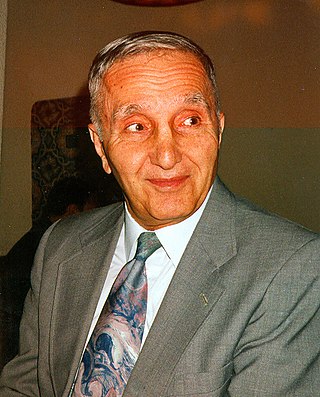
Sam Charles Sarkesian was a prominent scholar of civil-military relations and national security, who published numerous books and articles concerning various topics in these areas. He was also a member of the military, serving in Korea and Vietnam. He retired from the U.S. Army as a Lieutenant Colonel. He was also a professor emeritus of political science at Loyola University Chicago, where he was the Chair of the political science department and influenced many new scholars in the field. He also served as the second president of the Inter-University Seminar on Armed Forces & Society (IUS). His memory is strong in the IUS, as many of its fellows were his students.

Lookout Mountain Air Force Station (LMAFS) is a Formerly Used Defense Site which today is a private residence of actor Jared Leto in the Laurel Canyon neighborhood of Los Angeles, California. The USAF military installation produced motion pictures and still photographs for the United States Department of Defense and the Atomic Energy Commission (AEC) from 1947–1969.
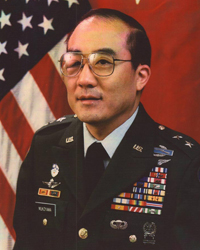
James Mukoyama was the youngest American to command a United States Army division. He served over thirty years on active and reserve duty in the Army, including service in Korea and Vietnam.

Kenneth A. Clarke serves as the executive director for Rescue Village, a humane society located in Geauga County, Ohio. He had previously served as the president and CEO of Pritzker Military Museum and Library in Chicago. He has also authored, published, edited and produced works as Kenneth Clarke and KC Clarke.
The tradition of photography started in the 19th century in Vietnam and has since then given rise to modern photography and photojournalism into the 20th century.



















